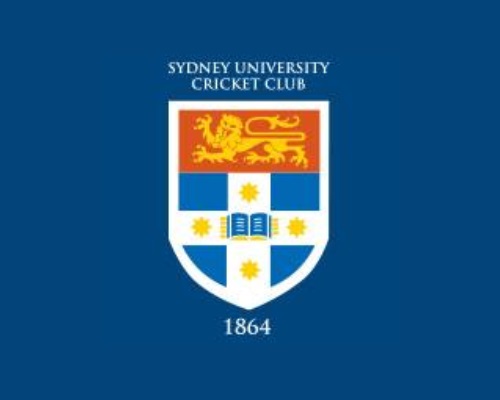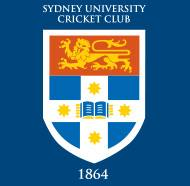Alfred Beecher Stewart White - Sydney University Cricket Club Patron 1939 - 1944
Sydney University Cricket Club | June 28, 2023

Alfred Beecher Stewart White 1879-1962
Patron of Sydney University Cricket Club – 1939-1944
ABS White has a record that’s unlikely to be approached or broken.
His last game in Grade Cricket for SUCC as an undergraduate was in October 1900. In the first two rounds of the 1900-01 season, he opened the batting for the Club’s 1st XI which was in exile, playing in the 2nd Grade competition for four seasons because of a protracted and acrimonious dispute over the eligibility of players for SUCC. White scored 60 against Norths and then 25 against Burwood before sailing to England.
His next game in Grade cricket for SUCC occurred 41 years later in 1941-42. These were grim seasons when many cricketers had enlisted. There were one day games only between the clubs but no Premierships were contested. SUCC struggled to fill a 3rd XI. Enlistments, military camps and the inevitable long vacation reduced available players to a trickle. The Club was granted a dispensation and two Graduates were permitted to play in 3rd Grade. Nevertheless, 53 players took the field for the 3rds during the season. The Club turned to its venerable Patron, ABS White, to captain the side. His sense of duty and responsibility to the Club characterized his response. White had been playing most successfully for the Veterans for over 30 years. He had an enviable record for North Sydney CC after graduation and had played four times for NSW. He and Syd Webb, the President of the Club, (who also returned to Grade cricket in the 3rd Grade side) held SUCC together during these trying times.
Limited statistics were published for the 1941-42 3rd Grade side. We know that Matthews scored 329 runs; that Wilkinson scored 287 runs and that Fred Smith, who had played two years in 1st Grade before the War, took 36 wickets. Did ABS White also score runs as he had been doing in almost every level of cricket for 50 years? After all, in his last two seasons with the Veterans, 1936-37 and 1937-38, he’d been dismissed only three times and had averaged 129. Unfortunately, no other statistics for 1941-42 survive. It was, however, an extraordinary comeback for a player aged 62.
Alfred Beecher Stewart White had been born 4 October 1879 at Mudgee, one of three sons and three daughters, to Robert Hoddle Drieberg White 1838-1900 and Eliza Jane (nee Cowper) 1844-1927. He was sent to the newly established Sydney Church of England Grammar (‘Shore’) School and quickly showed promise as a cricketer, an upright batsman who scored runs with his technically correct on drives and deft late and back cuts. His first game for the school 1st XI was on 1 November 1893, just after he had turned 14, against Newington in the newly formed GPS Cricket competition. He batted at number three and made 13 which was the highest score in Shore’s dismal 46. In his second game a few weeks later, he opened the batting with Gother Clarke who was to represent NSW and to be killed during the Great War. For most of the rest of his long career, White went in first. Shore’s batting was consistently weak but White stood out, averaging 30 in his first season, but even he could not stop the inevitable collapses in 1894 when, aged 15, he captained Shore’s 1st XI. Successive all-out scores of 29, 25, 45, 64, 60, 27, 42 and 8 for 35 characterised Shore’s abysmal season when they won no games and finished last. From then on, until 1898, Shore relied on White and he rarely disappointed, scoring 2745 runs @ 45.7 in all 1st XI games including 163 not out in the 1898 game against Newington at Stanmore. He bowled tidily.
Going up to the University in 1898, he had developed into a tall, well-built athlete who easily fitted in with the University 1st XI, unfortunately playing in the 2nd Grade competition only. He also represented the University Football (Rugby) Club. For the cricket team, he scored a century on debut, 117 not out against Manly, accumulated 617 runs @68.5, and took 32 cheap wickets. In 1899-1900, his form fell away (259 runs @28.8) because of his studies, so it was said, and in 1900-01 he played just two matches, despite election to the Club’s Committee, before sailing to England. His SUCC Grade career seemed to have finished. He returned to Sydney, married Adele Julie (nee Pitt) in 1903 and resumed his Grade career, this time with North Sydney and took his first steps in the family’s stockbroking firm, ‘ABS and Co’.
He played briefly for North Sydney’s 1st Grade side in 1903-04 and also, when he was available, for the SUCC Veterans, where he scored 392 runs @49 and took 20 cheap wickets. His beginning to the 1904-05 season, however, can scarcely have been more explosive. In North’s 2nd Grade, he began with an astounding 278 not out in a total of 8 for 698 against the hapless Manly side. This 278 has, for 119 seasons, remained the highest individual score in 2nd Grade among all Clubs. White followed this with 149 against Glebe and after two rounds had scored 427 runs @427. Within thirteen months, he had made his 1st class debut for NSW against Queensland. Restored to 1st Grade, he continued his batting marathons at the crease: 198 not out against Middle Harbour in 1905-06, then, 151 in a trial match for the NSW 2nds. In 1906-07 in a similar trial game he scored 181.
The Sydney Morning Herald commented:
“His style is different from most of our leading players, but he is one of our soundest batsmen, also a good field.”
What was “different” about his “style” was not explained but he kept scoring runs, eventually finishing with 2172 runs @49.36 for North Sydney.
Spread across four seasons, he represented NSW four times, all against Queensland , finishing with 291 runs @48.5 including a score of 147 in his last 1st class season, 1908-09. He batted 250 minutes for his 147 in Brisbane and hit 15 fours. In Sydney in January 1909 he was captain of a NSW side that lost by two wickets. He contributed only 21 and 8 with the bat and his 1st class career was over. He had also played for NSW in a two-day game against Fiji in 1907-08 when he scored another century and took 4-18 with his off breaks.
For the next 30 years, he continued to dominate the SUCC Veterans’ averages. When many of the pre-war players returned to cricket it was to play for ‘The Vets’. For instance, in 1921-22, White was joined by Jack Massie, Paddy Lane, Cecil Rogers, Joe Woodburn, Hugh Massie, George Willcocks, Archie Blue, Iven Mackay, AH Garnsey, Percy Penman who had all represented SUCC’S 1st Grade with distinction in the earlier years of the 20th century. Without flourish, White once again scored most runs, 539 @49 and again took cheap wickets, 23 @12. Jack Massie, a decorated and severely wounded war hero, however, bowling now off a few paces, was unplayable. His 85 wickets for 829 remains, unsurprisingly, a record for the SUCC Vets.
ABS White continued to turn out for and, most often, captain the Vets. His form, even approaching his sixties was irresistible as he accumulated over 7000 runs and took over 400 wickets. He simply scored runs wherever he played.
He still took a great interest in the Club and served as President for a time.
Then, in 1939, the Club resurrected the position of ‘Patron’ which had remained unfilled for over 50 years and it was ABS White who presided then for the next five seasons, including 1941-42 when he answered a most unlikely request to return to Grade cricket.
Even after stepping down as Patron in favour of Jack Massie, White continued his lively interest in the Club which only ceased when he died in 1962.
ABS White’s son, Edward Clive Stewart (Ted) White 1913-1999, was a tall slow left arm bowler who played 56 first class matches after graduating from Shore School in 1932. For the Shore 1st XI he took 175 wickets in four full seasons and scored over 1000 runs. Selection in North Sydney’s 1st Grade was followed by a first class career that spanned the seasons from 1934 to 1939. He took 8 for 31 against South Australia in 1935-36 on a rain-affected pitch and he was taken to England with the 1938 Australian side. In a dry English summer his bowling did not have the impact that was hoped for and he was not used in any of the Test Matches. He served in World War II and was eventually promoted to the rank of Major. After the War, he resumed his cricket career, this time with IZingari, and was still bowling well enough approaching his sixties to capture 823 wickets for the club during a career of over 20 years.
James Rodgers
Acknowledgements to Max Bonnell and Dr Colin Clowes.








